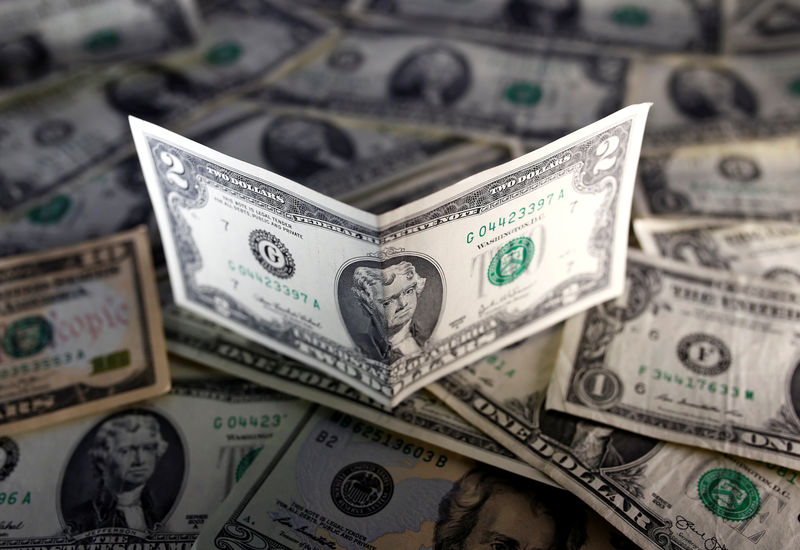Investing.com - The dollar rose to the day’s highs against a currency basket on Tuesday as market sentiment recovered a day after mounting trade tensions sparked a selloff in risky assets.
The U.S. dollar index, which measures the greenback’s strength against a basket of six major currencies, was up 0.32% to 94.25 by 05:51 AM ET (09:51 AM GMT) after ending the previous session down 0.24%.
The greenback had been pressured lower as long-term U.S. Treasury yields slid amid heightened risk aversion in financial markets.
Markets regained composure after remarks by White House trade adviser Peter Navarro Monday helped ease some investor concerns about U.S. trade policy.
Navarro indicated that plans to bar Chinese companies from investing in U.S. technology firms won’t be as damaging to the economy as markets are anticipating.
The Treasury Department is due to announce restrictions on Chinese investment in the U.S. by Friday.
Such a move would counter a Chinese initiative to be a global leader in technology and mark another escalation in the trade conflict between Washington and Beijing, following the threat of tit-for-tat tariffs.
Besides the trade dispute with China, U.S. President Donald Trump has ratcheted up trade tensions with the European Union by threatening tariffs on cars imported from the bloc.
The dollar was still a touch lower against the yen, with USD/JPY last at 109.72, having fallen to a two-week low of 109.36 on Monday.
The safe haven yen is often sought by investors in times of geopolitical tensions and market turmoil.
The euro fell to the days lows, with EUR/USD down 0.38% to 1.1658 after edging up to a two-week high of 1.1720 overnight.
Sterling was also lower against the firmer dollar, with GBP/USD sliding 0.35% to 1.3231.
The pound came under pressure after incoming Bank of England policymaker Jonathan Haskel said that there may be more slack in the UK economy, which would weaken the case for interest rate hikes. He added that the central bank has scope to cut rates slightly lower in case of an economic downturn.
